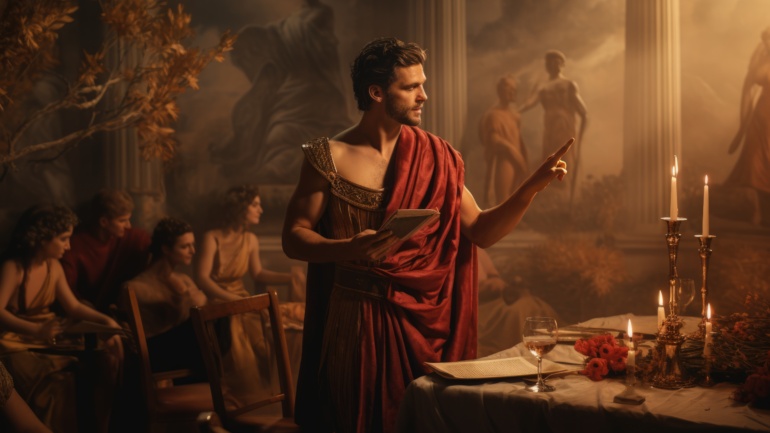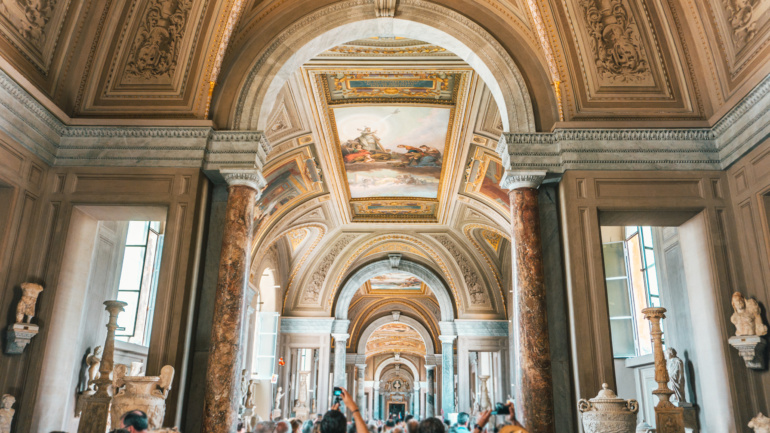Today, let’s talk about Antonio Vivaldi — known as the “Red Priest,” and the composer of the famous The Four Seasons, a piece you’ve very likely heard before.
Vivaldi, the “Father of the Concerto”
- Antonio Vivaldi (1678–1741) was a renowned Italian musician from the Baroque period, holding an esteemed position in the music world at the time. He is often referred to as the “Father of Music” in Italian Baroque history. Vivaldi composed prolifically throughout his life, inspiring countless composers and playing a key role in shaping the future of music. His contributions to the concerto genre were particularly groundbreaking, earning him the title “Father of the Concerto.” His most famous work, The Four Seasons, remains one of the most recognizable pieces of classical music today.
- Vivaldi’s full name was Antonio Lucio Vivaldi. He was born in Venice into a modest family—his father was a violinist in a church orchestra. Vivaldi later became a priest, and due to his bright red hair, he was famously nicknamed the “Red Priest.”
- Unlike many musicians of his time who served nobles or the church full-time, Vivaldi was a clergyman, and this identity had a significant impact on his musical output. In a still-developing Venetian society, abandoned children were common. As a priest, Vivaldi taught music at a girls’ orphanage. The orphanage had a large string orchestra that regularly performed for the public, so Vivaldi needed to write a vast number of compositions for them — including instrumental pieces and choral works.
- Vivaldi was known to be vain and arrogant. He would exaggerate the number of works he had composed just to boast about his talent and once claimed he could compose a piece faster than a copyist could write it down. While his humility was questionable, his fame at the time was undeniable — people traveled from afar to Venice just to hear his music. And despite his bold claims, they were not far from the truth; few Italian composers of his era could rival his talent.
- Vivaldi is known as the “Father of the Concerto.” The word concerto comes from Latin and doesn’t mean “harmony” as it might seem; instead, a more accurate translation would be “competition” or “dialogue.” A concerto is a form where a solo instrument and orchestra engage in a kind of musical contest, with contrasting and dramatic interplay. Vivaldi wrote over 600 concertos, most of which were for the violin.
- Vivaldi established the “fast-slow-fast” three-movement structure of the concerto, a format that continued to be used into the Romantic period. Classical scores typically include Italian tempo markings at the beginning of each movement. Vivaldi’s concertos usually began with an Allegro (bright and lively), followed by an Adagio (slow and gentle), and concluded with a faster movement like Presto to create dramatic contrast.
- Vivaldi’s impact on the concerto was profound not just because of the quantity, but also because of the variety. He explored concertos for multiple instruments — for instance, his famous Concerto for Four Violins featured all four as soloists. Even Johann Sebastian Bach was deeply influenced by Vivaldi, adapting many of his works, including the Four Violin Concerto, into keyboard concertos.
- Vivaldi’s most iconic concerto, The Four Seasons, features beautiful, vivid melodies that have stood the test of time. Each of the four concertos follows the three-movement structure and is paired with a sonnet describing scenes from each season — a form of early program music. The set includes Spring (E major), Summer (G minor), Autumn (F major), and Winter (F minor), each capturing the spirit of its season. The first movement of Spring is the most well-known and frequently performed.
- Vivaldi’s achievements in instrumental music were so prominent that his vocal works are often overlooked. While not as numerous, these pieces are gems in their own right. In addition to choral works, liturgical music, and cantatas, Vivaldi composed over 90 operas — although many have been lost, around 40 operas have survived to this day.


